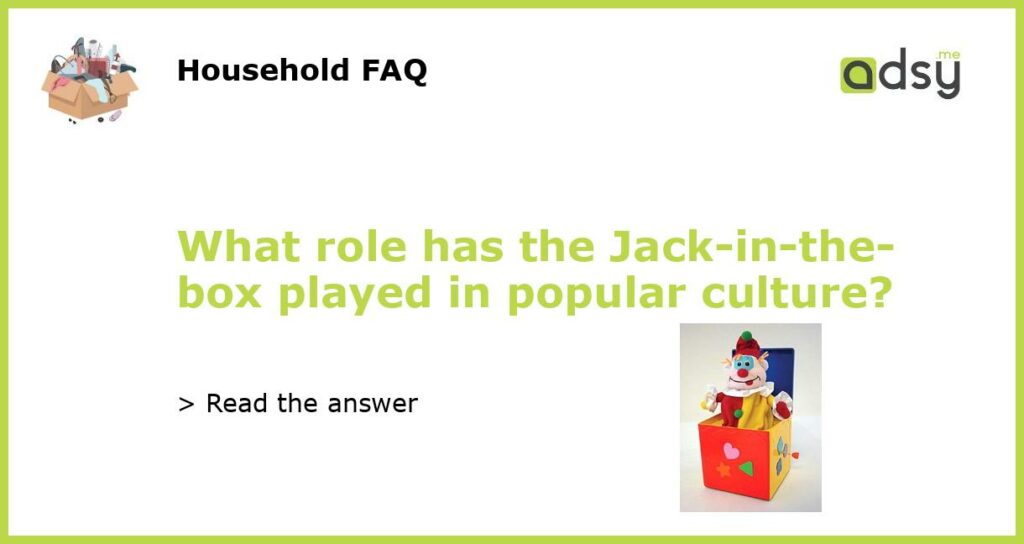The History of the Jack-in-the-box
The Jack-in-the-box has been a popular toy for children for centuries. It is believed that the toy originated in the 16th century in Europe. Traditionally, the toy consists of a box with a crank on the side. When the crank is turned, a spring inside the box is wound, and a small figure of a clown or another character pops out of a trapdoor on the top of the box. Over the years, the design of the toy has evolved, and today there are many different versions available.
The Jack-in-the-box in Popular Culture
The Jack-in-the-box has played a significant role in popular culture, appearing in movies, television shows, and even video games. In the 1970s, the toy became the mascot for the fast-food chain Jack in the Box, which used a jester as its logo. The company’s commercials featured a life-sized version of the Jack-in-the-box character, which became a beloved pop-culture icon.
Jack-in-the-box Horror Movies
The Jack-in-the-box has also been used in horror movies, where it is often portrayed as a sinister object that harbors dark secrets. In the film “Annabelle Comes Home,” a demonic version of the toy is used as a weapon by the eponymous character. In other horror movies, such as “Dead Silence” and “The Funhouse,” the Jack-in-the-box is used as a prop to create a sense of unease and foreboding.
The Jack-in-the-box as a Symbol of Childhood
Despite its dark associations in horror movies, the Jack-in-the-box is still a beloved symbol of childhood for many people. In literature, the toy has been used as a metaphor for the unpredictability and uncertainty of life. In “The Catcher in the Rye,” the protagonist Holden Caulfield describes himself as feeling like a Jack-in-the-box, constantly on the verge of “going off” at any moment.
The Legacy of the Jack-in-the-box
Today, the Jack-in-the-box remains an enduring symbol of childhood, representing the innocence and joy of youth. Although the toy has evolved over time, it has remained a popular staple in children’s playrooms around the world. The Jack-in-the-box will likely continue to play a role in popular culture for many years to come, providing inspiration for artists, writers, and filmmakers as they seek to capture the essence of childhood wonder and imagination.






